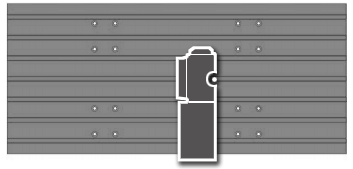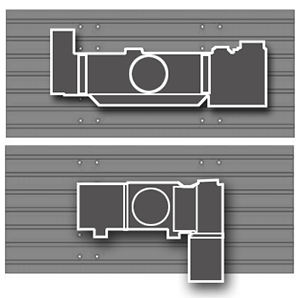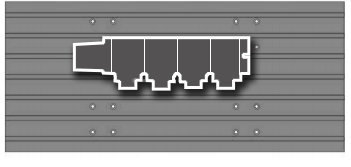Many machine shops recognise that a rotary 4th axis is not just for cylindrical parts but can return massive benefits in terms of cycle time savings, reduced setup times and component quality for those multi-sided parts where more than one setup/operation would otherwise be necessary on a conventional three axis machine. Building on the success of their rotary table range, Haas engineers ensured that from the very first Haas mill, the capability for full 4th axis machine would be available as an optional extra, but it would also be a quick and easy setup that in most cases the operator would be able to complete.
Where your Haas machine already has the optional 4th axis drive installed already connecting a Haas 4th axis could not be easier using Setting 30 where Haas store all the parameters for all of their rotary models. Once the rotary is connected using the procedure in the Haas manual, the operator selects his model from the list and the Haas control will automatically retrieve the data and store in the correct parameters – making the Haas 4th axis units a truly ‘Plug & Play’ option.
For programming simplicity the Haas control needs the bare minimum of code for common operations such as drilling a hole on each face of a 6 sided component, for example;
T01 M06 (CALL DRILL);
G0 G90 G54 X0. Y0. A0. S5000 M03;
G43 H1 Z50. M08;
G81 Z-10. F500. G98 (CALL CYCLE & DRILL ONE HOLE);
G91 A60. L5 (REPEAT CYCLE 5 TIMES AT 60 DEGREE INTERVALS);
G0 G90 G80 Z50.;
G28 G91 Y0. Z0.;
M30;Further user friendly features include G107 Cylindrical Mapping covered in a previous email (2nd October 2009) or for milling applications use Setting 34 to store the 4th axis diameter, this is very important since all programmed feedrates are in mm/min. which is a linear measurement, however when the correct diameter is entered into Setting 34 the Haas control will calculate the angular feedrate using the diameter and the linear program rate and hence coordinate the 4th axis to move at the correct speed to achieve the required linear feed from the program.
Specific instructions are enclosed within the Haas manual, please consult the manual first for further information or call the Haas Service Dept. for assistance.
For Example: When a rotary fits with alternative fixturing, it may fit in that particular Haas mill, but will require a sub-plate or alternate T-slot for proper positioning. We have labeled this particular rotary and mill combination with a yellow caution
You can design and build your own sub-plate using the dimensions of your Haas mill and the dimensions of the rotary you'd like to use on that mill. Product dimensions are available for every machine and rotary on this website.
Single-Head Rotary Tables and Indexers are usually mounted to the right side of the table, with the rotary facing the centre of the machine. This is the basic setup we used to determine the fit of your rotary product.

Image shown for mounting example purposes only. Your actual rotary and mill appearance may differ.
Trunnion Tables, T5Cs, and TRTs are usually mounted in the centre (or slightly off-centre) of the mill table. If you are using probing on the mill, be aware of the interference with larger tools, especially during tool changes.
NOTE: Trunnion units present interference issues with the swing of the unit relative to the machine column and spindle head.

Image shown for mounting example purposes only. Your actual rotary and mill appearance may differ.
Multi-Head Rotary Tables and Indexers are usually mounted toward the back of the table, with the indexer heads or platter facing forward. To mount a multi-head rotary in a different orientation, you must use alternative fixturing.

Image shown for mounting example purposes only. Your actual rotary and mill appearance may differ.
Important Information:
4-axis machines cannot use dual-axis rotaries.
Some options may affect mounting (EC-1600 4th-Axis Table, Low-Profile Tables, Table Spacers, Column Risers, etc.
Tool Changers: SMTCs and umbrella tool changers both present interference issues, plan appropriately.

